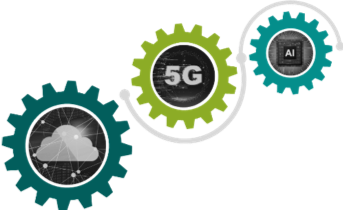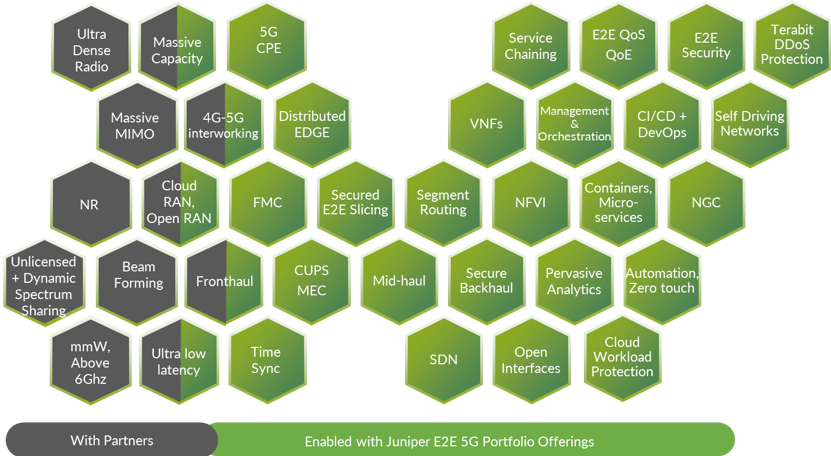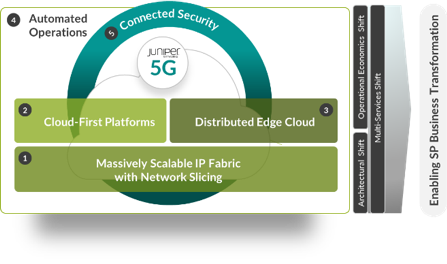By now, the industry is familiar with 5G and the potential it presents to service providers as they introduce new services and use cases. But is 5G enough to enable service providers to transform their businesses? Will it change the game in terms of the massive shifts that operators must make to their network architectures, operational economics and services models? Will it help them create value and seal their position in the value chain?
5G alone is not enough to drive service provider business transformation. 5G is part of the broader revolution that also embraces cloud and AI technologies to drive a more robust and sustainable platform for service providers. In order to truly capture value and realize the possibilities that these technologies promise, service providers must consider cloud, 5G and AI, collectively. These technologies build on each other and, in some cases, even depend on each other to work. For example, many of the benefits of 5G cannot be optimized without cloudification of the infrastructure, whether it’s telco cloud/NFVI, distributed edge cloud, virtualized or containerized (VNF/CNFs) or disaggregated functions. While 5G and cloud together deliver quantum leaps in scale, performance and agility, they also create more operational complexity that can only be simplified and managed with AI.
5G is not a standalone technology. It’s closely intertwined with cloud and AI, both of which are driving service provider business transformation in the new decade. The journey to the ‘Cloud + 5G + AI’ era will be different for every service provider, and by no means an easy change. Juniper is on a mission to bring Cloud + 5G + AI to reality for our customers by simplifying their journeys and making each step a practical one.
The promise of cloud, 5G and AI is not just about 5G new radio (NR) or 5G next-generation core (NGC) – it requires multiple building blocks. During this transformation, service providers will replace many physical boxes with virtualized, cloud-native network functions. These network functions will be disaggregated to support service-based architectures, migrating to secure, distributed edge clouds.
In addition to high-performance infrastructure platforms, IP transport fabric will use virtualized routers, virtualized SDN, virtual security functions and control-user plane separation (CUPS) as inherent functionality within a distributed telco cloud architecture. Static capacity will give way to a dynamic, demand-driven approach, combining network slicing with massive bandwidth and scale. Common-service infrastructure will yield to a multi-service network delivering enterprise, consumer and government use cases from any point in the network. Intent-driven, closed-loop automation based on AI and ML, together with real-time streaming telemetry and analytics, will enable simplified zero-touch operations. Security will take a new approach from bolted-on to fully connected and extended to every point of connection. Every part of the network must be ready for the cloud, 5G and AI decade.

Transforming Business and Operational Models for the Future
Juniper provides all of the key building blocks to enable this transformation through a combination of its own robust portfolio and key strategic partner offerings. With each of these building blocks, our goal is to enable a shift across three dimensions – network architecture, operational economics and services. These shifts are not just at the network and operations level, but also support the business model transformation that service providers require to create value, ensure relevancy and compete in this new decade.
 With five key pillars, Juniper is bringing cloud, 5G and AI solutions to life:
With five key pillars, Juniper is bringing cloud, 5G and AI solutions to life:
• Cloud-First Platforms
• Distributed Edge Cloud
• Massively Scalable IP Fabric with Network Slicing
• Automated Operations
• Connected Security
Join interactive breakout sessions and explore how to realize the benefits of Cloud + 5G + AI. Register for our Juniper Virtual Summit for Cloud & Service Providers on June 10 (US/EMEA) and June 11 (APAC) here.

























